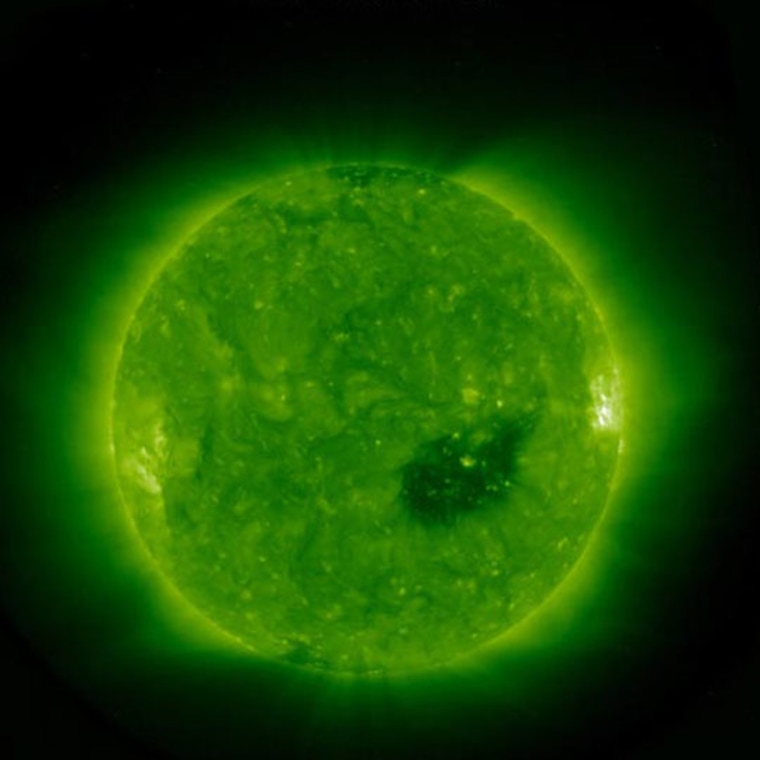The sun is taking a once-in-a-century nap, say solar researchers. The sun's wind of hot particles is now blowing with less vigor and less heat than at any time since the start of the Space Age in the mid-20th century, according to data collected by the 18-year-old Ulysses spacecraft.
As a result, the cozy bubble of charged solar particles that fills the solar system is shrinking, exposing Earth and other planets to the onslaught of needling galactic cosmic rays which are normally held at bay by the solar wind.
"It's a big deal," said Nancy Crooker, solar researcher at Boston University. "It's the first time we've measured these conditions. It's expanding our horizons of what we can do and compare."
The sun is presently at the lowest point in its 11-year cycle of sunspot activity, but it's also 20 percent cooler and less windy than the last solar minimum in 1994-95, explained Karine Issautier, the Ulysses radio wave lead investigator at the Observatoire de Paris, Meudon, France. In other words, the sun is showing signs of other, much longer cycles which also affect its power output.
The sun is also hitting an all-time low for its wind speed and pressure, blowing at 25 percent less than at the last solar minimum, reported Southwest Research Institute's David McComas, principal investigator of the solar wind instrument on Ulysses.
"The pressure of the solar wind is like air filling up a tire," said McComas. "It inflates a bubble in space…This is the lowest prolonged pressure that we've ever observed."
Not that it hasn't happened before, said Crooker.
Two hundred years of records showing the rise and fall in sunspot numbers suggest that there were other times when the sun was unusually calm, but we had no instruments in space then to make measurements, she said.
In practical terms the most minimal solar minimum means it's a bad time for astronauts to venture to the moon or beyond, because they would be outside of the protective magnetic field of the Earth and more exposed to cell-damaging cosmic rays, said Crooker. It's about as bad, ironically, as a furiously active sun which spews out dangerous radiation that would also hurt astronauts beyond Earth's orbit. Either extreme is bad news for interplanetary travel.
Inside Earth's magnetic field the main effect of the cooler, less windy sun is the cooling and lowering of the outermost part of the atmosphere. While that has minimal effects on the climate, it does slow down the rate at which orbiting manmade space junk gets dragged down and burned up in the atmosphere — which is bad news to astronauts in orbit who fear collisions with the debris, Crooker explained.
Ulysses is the only spacecraft to observe the sun in 3-D by flying over the sun's poles. The Ulysses mission has been underway for almost 18 years, allowing it to observe the sun during two solar minimums and one solar maximum.
